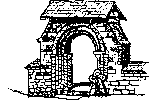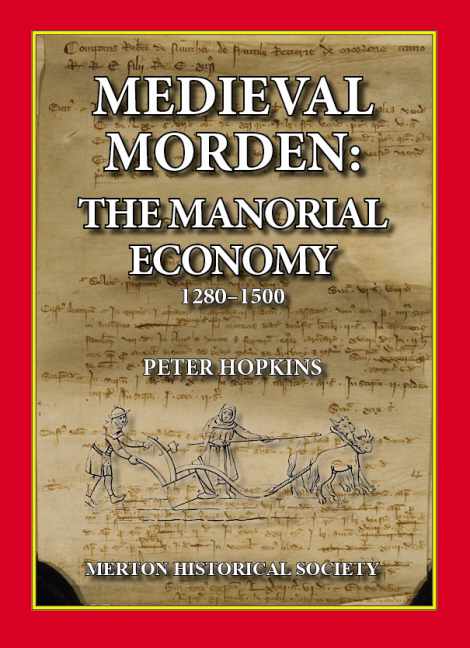Paperback volumes
Although most of our publications are produced in-house, the Society has also commissioned some professionally-printed paperback volumes:
A Priory Revealed

A Priory Revealed, which bears the subtitle – ‘using material relating to Merton Priory’ – draws upon a wide range of primary and secondary sources in order to describe, in a most accessible way, the organisation and life of not only Merton Priory, but Augustinian houses elsewhere in the British Isles. However, the focus of attention throughout the book is always on Merton, its buildings; its life; its organisation; its personalities; and the important part played by the priory on the national stage during the Middle Ages.
Abbey Roads: a modern pilgrimage
When it dawned on Bill Rudd that most of the roads in the St Helier Estate in Morden and Carshalton were named after British monastic sites, he conceived the idea of visiting every one of these sites – 108 of them – photographing them and learning what he could about their histories. Abbey Roads, is Bill’s own account of his Project, which he based on his diaries and notes, and this has been illustrated with his fine photographs..
Coal and Calico: Letters and Papers of the Bennett and Leach Families of Merton and Wandsworth
This publication is concerned with two families who, for several decades in the 18th and 19th centuries, were important in the industrial north-east of the historic county of Surrey. They were the Bennetts, coal merchants of Wandsworth, and the Leaches, calico printers of Merton Abbey. These families, who were at first business contacts and then became friends, were joined permanently when Thomas Bennett married Sarah Jane Leach in 1797. Their grandson, Frederick Bennett, seems to have decided to leave a genealogical legacy to future generations. Firstly, from his own recollections and research he compiled a memoir of the Bennett family; secondly, he assembled the inherited letters and papers into a bound volume, and added his own commentary; and, finally, he put together, from both published and manuscript material, an account of Merton Abbey. Judith Goodman has edited these three projects into this volume.
Medieval Morden: Landscape and Landholding

The second of three planned studies by Peter Hopkins into various aspects of medieval life as revealed through the surviving records, this volume seeks to reconstruct the changing topography of medieval Morden and investigates the various ways that property was held and transferred over the centuries..
Medieval Morden: Neighbourhood and Community
 This study focuses on social interaction and community dynamics, in the light of the demands made of Morden’s inhabitants by the State, by the Church and in particular by Westminster Abbey as manorial lord, but also by the local community and the family. Most of the information comes from manorial court rolls, and the role and processes of the manor court are examined at the outset. Other chapters consider differences in status and in wealth, the role of credit, the evidence for conflict and cooperation and for the exercise of power and influence by local people. From brewers and bakers to priests and parishioners, this book explores the strengths and the tensions that worked together to form and to challenge a sense of neighbourhood and community in Morden especially in the centuries following the Black Death.
This study focuses on social interaction and community dynamics, in the light of the demands made of Morden’s inhabitants by the State, by the Church and in particular by Westminster Abbey as manorial lord, but also by the local community and the family. Most of the information comes from manorial court rolls, and the role and processes of the manor court are examined at the outset. Other chapters consider differences in status and in wealth, the role of credit, the evidence for conflict and cooperation and for the exercise of power and influence by local people. From brewers and bakers to priests and parishioners, this book explores the strengths and the tensions that worked together to form and to challenge a sense of neighbourhood and community in Morden especially in the centuries following the Black Death.
This volume also includes a substantial biographical register of over 1000 individuals who appear in the surviving records and who played their part in creating medieval Morden’s communal life.
Medieval Morden: The Manorial Economy
Peter Hopkins began his studies of Medieval Morden more than 20 years ago, by copying, transcribing and translating any and every medieval record relating to Morden that he could find.
 MERTON HISTORICAL SOCIETY
MERTON HISTORICAL SOCIETY 


